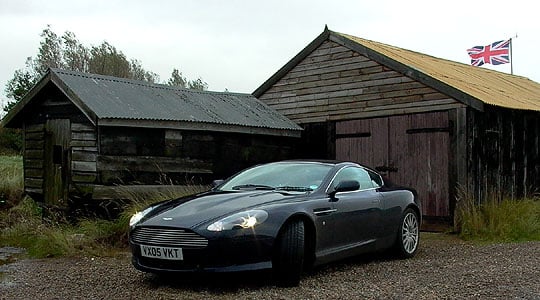
While all attention has been on the youngster in Aston Martin’s portfolio, let’s not forget the first truly new car from the Gaydon factory. It’s got an extra 4 cylinders, 70 HP, two seats and an automatic gearbox - the DB9 Coupé.
Collection from Gaydon allowed a visit to the production line for both the DB9 and V8 Vantage, and let’s make one thing clear - it is a production line, albeit a slow-moving one that involves a high percentage of bespoke work and infinitely patient quality control. And not a lot different from a visit to Maranello in the Summer (there will be more Ferrari comparisons later on). With an Autumnal gloom settling on the English countryside (and an ‘r’ in the month), it was decided to steer the Midnight Blue car eastwards, and enjoy half a dozen oysters at Orford, on the Suffolk coast.
If the engine is a variant on the 6.0 litre Vanquish/DB7 unit, the extruded aluminium bonded monocoque chassis is all-new and it really is the star performer in the car. With the glued assembly-process of the previous day fresh in my mind, just steering the car over the lumps and bumps that are 21st century British A- and B-road tarmac is a revelation. It feels so tight and together with no rattles or squeaks. It’s truly extraordinary. The ride is firmish, but clearly the stiff chassis allows a well-developed suspension to give tremendous road-holding and traction – the latter aided by electronics kicking in a few times over the weekend.
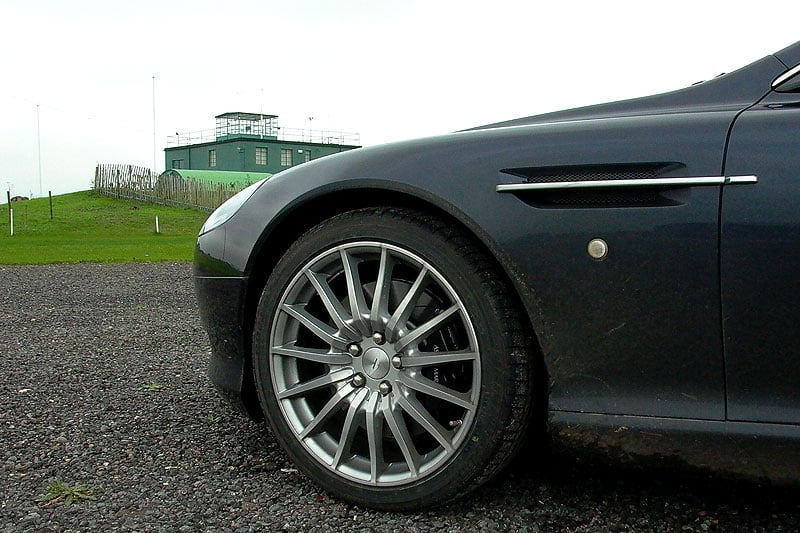
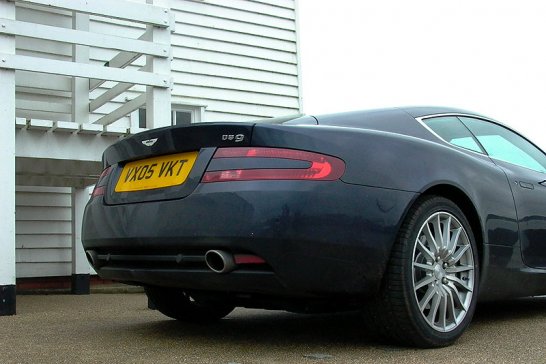
Once underway with any true purpose (rather than inner-city bumblings), and fresh from driving the Ferrari 612 Scaglietti in Italy the week before, I instinctively reached for the paddles behind the 'wheel thus converting the conventional automatic gearbox into a pretty effective manual. Just pretty effective? Well, yes, nothing can match the lightning speed and positive action of the Ferrari F1 sequential gearbox, and once you get used to that there is an inevitable degree of hesitation with the Aston’s shifting characteristics. Of course when in Auto it’s a different matter and the Aston is smoother any day of the week, but I have rather got used to resting my left leg while using the steering wheel paddles even in traffic, and instinctively pull on the left-hand one when entering a fast corner to knock it down a gear - the auto will not react quickly enough - and ‘paddling away’ is no great hardship.
The engine produces the goods in a gutsy manner once the threshold for opening the exhaust valve has been reached, and the roaring bark produced by the car is more akin to V8 Astons of old than an Italian V12 with all its creamy electric-motor-like smoothness. It’s a brilliant way of retaining the pugnacious growling power of the marque with a modern hi-tech twist. It’s also an irresistible sound that does not wear on a long journey - the longish gearing means you can drop in and out of the aural experience at will.
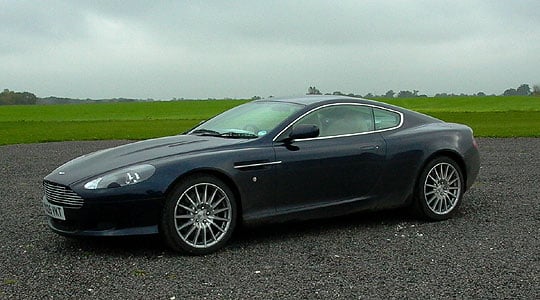
450 HP means quick acceleration in anyone’s book, although remember the car’s a practical GT car rather than out and out track machine in the mould of the F430 (that has an extra 74 HP/tonne). But keep the revs a reasonable way up the tacho on a nice bit of road and it sure produces the goods. And the clever chassis means a bit of sloppy driving is not rewarded by a visit to a hedge, it’s a very forgiving well-balanced machine.
We were only going out for the day so had no need to address issues of luggage, but you’d soon be using the rear seats for soft bags on any trip of longer duration. Having the rear ‘seats’ in the car gives the interior a nice airy, typically Aston cockpit space but don’t think you could use them for anyone bigger than very young children - there’s little room at all. And while we are in mildly critical mode, the dials are difficult to see in sunlight, an issue that also affects the particularly impressive SatNav system (whose instructions seem to take up half the handbook, over to my passenger for that one).
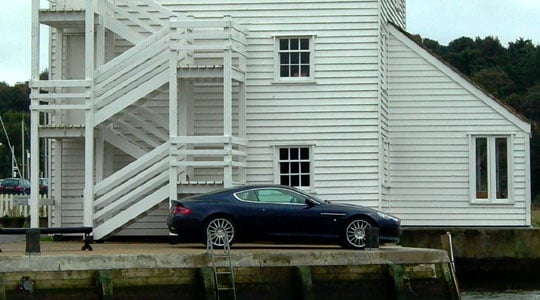
So we got to the restaurant in fine style, and tucked into an excellent piscine platter, with some purchases from the nearby smokehouse to take away. Driving away and on to our final destination for the day (Stratton Motor Company in Norfolk, to look at the new V8 Vantage), reveals the mark of a good car. The lunch break makes you appreciate its qualities better, it (and you, perhaps) have matured and become more familiar on reacquaintance. The driving faster and safer, more accomplished and rewarding.
As a lifelong fan of the marque you know I’m going to say it’s a great car - it is, and one of the nicest aspects of it is how others treat you, with respect and appreciation rather than envy. The personalisation programme allows an owner to specify a bewildering number of colour and trim combinations that go part of the way to retaining the marque’s exclusivity and Savile Row connotations of old. From a competition point of view the ‘9 stands midway in pricing and performance between the Maserati Coupé and the Ferrari 612 Scaglietti. Don’t forget the Italian V12 is a lot more expensive (but with an edge on performance and in my opinion exclusivity), while the Maserati lacks the British cars ‘go’ and drop-dead gorgeous looks but has a significant price advantage and usable rear seats.
So avoiding the pearls and grit oyster clichés, it’s down to another one to finish: advantage Aston once again.
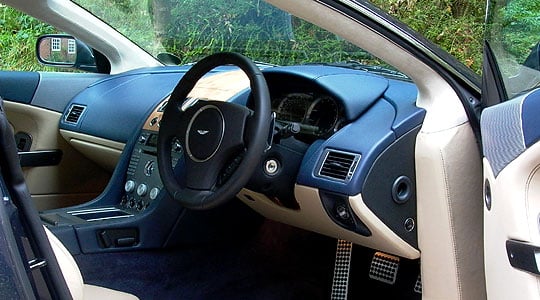
The car tested was a DB9 Coupé with Touchtronic transmission in Midnight Blue. Options fitted to the test car included satellite navigation, heated front seats, heated front screen and rear parking sensors. The car featured the optional 15-spoke variant of the 19" lightweight aluminium wheels, a £995 option.
The 2006 model year price for the car is £109,850 plus options.
Lunch was taken at the Butley Orford Oysterage. For further details please visit www.butleyorfordoysterage.co.uk.
Text: Steve Wakefield
Photos: Classic Driver
ClassicInside - The Classic Driver Newsletter
Free Subscription!






